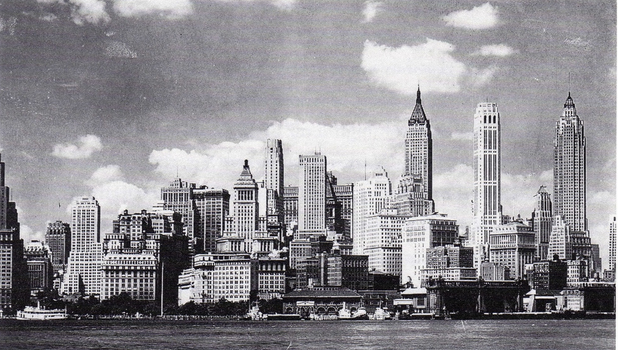
Drawing by Leon Krier. (BD)
According to the headline writers at BD magazine, Britain’s leading journal of architecture, the takeaway from Leon Krier’s new essay there is “It doesn’t matter if skyscrapers are designed by world-class architects or hacks – they’re destroying our cities.”
I agree with Krier, and maybe even with the headline writer’s decision to entitle the piece as he (or she) did. But my dander has long been slow to rise at the idea of the villainy of skyscrapers. Which is not to say that Krier is anything but spot on in stating that 400 proposed new skyscrapers are going to destroy London. What they will surely do is to destroy London’s character as a historic city. Though arguably that task has already been accomplished. Historically, London, unlike New York, Chicago, Hong Kong, Shanghai and maybe some others, was a low-rise city well into the late 20th century. Have skyscrapers destroyed those cities? Not yet. Like London, New York sidewalks are crowded and gridlock often jams its streets, likewise Chicago to a lesser extent. Perhaps Shanghai or Hong Kong seem to survive the throttle of their skyscrapers because so many people there ride the subway or bicycles, but they are getting more cars, too. China’s other major cities are as well. Other Asian cities, such as Calcutta, seem to be famously overcrowded but have far fewer skyscrapers to bollix their transit and civil infrastructure. Maybe Paris is another famous city that manages to be crowded without skyscrapers.
I’m sure that too many skyscrapers is not good for cities, but it depends on how many skyscrapers and what sort of cities. Some cities have governments that are better at managing infrastructure and transit. Others, not so much. But soon after I started wondering what Krier was leaving out of his analysis, I came upon this extraordinarily evocative passage, in which he imagines alternate pasts and futures for London:
[W]hat if all buildings from before 1940 disappeared from London? Mayfair, Westminster Palace, Regents Park Terraces, Pall Mall, Belgravia, Kensington, Primrose Hill, Hampstead and all London villages and traditional fabric replaced by post-1945 designs, densities and materials. If that is not enough to convince you of the tragic loss of professional capacity and responsibility, imagine conversely: what if all post-war buildings were replaced by buildings and densities of before 1945?
Clearly, London would be less crowded and there’d be less pressure on its urban systems if all the buildings built since 1940 had been of a similar character as those built before 1940. And clearly, you might not even be able to tell London from Hong Kong if its remaining historic fabric were replaced by the sort of buildings London has had inflicted upon it since 1945. And, alas, this is precisely what is happening. Krier may or may not have been thinking much about what the buildings would look like – but I am. That may be what he and others who lament skyscrapers are leaving out.
The evils of skyscrapers may perhaps be laid at the doorstep of their appearance these days as much as any other factor.
If the skyscrapers of London today were replaced by the skyscrapers of New York in 1945, things would not be so bad. It would still be crowded in London, but it would not be anywhere near as unpleasant. Those buildings were beautiful. And they were more sustainable (with operable windows, for example) than what is being built today. Picking up on the thoughts of Roger Scruton in The Classical Vernacular, would it not be plausible to imagine that if London’s skyscrapers today were as civilized as New York’s were in 1945, perhaps the resulting civilities of the civic square might have generated a more sensible civic approach to the problems of urban growth – more more civitas, more gravitas, more good humor? Maybe that’s a stretch, but beauty is a balm, and some people like a vigorous frottage scene. (Only kidding.)
I’ll grant that skyscrapers of whatever sort lay heavier hands upon city infrastructure than mid- or low-rise buildings. They are harder on the environment. They literally press down harder on the earth. But isn’t that because they enable so many people to crowd into such a small territory? And isn’t that supposed to be good for a city’s carbon footprint? Color me confused. I have not studied skyscrapers with the rigor of Leon Krier, James Howard Kunstler and others. No doubt I have omitted some major factors in this brief soliloquy. And maybe Krier is right to cite garden cities as a better solution. Still, it’s hard to resist the cogitations that inevitably arise from reading one of his essays, and this is their result, at least inside this one noggin. So for what it’s worth, it is what it is.

Lower Manhattan from Governor’s Island in 1936. (favrify.com)



Pingback: Driehaus prize to Robert Adam | Architecture Here and There
Context matters about 95% when considering high rise
LikeLike